Lower Back Pain (Part Three)
Degenerative Spondylolisthesis
It is the slipping of one vertebra over another.
Age-related changes and "wear and tear" damage make it difficult for the joints and ligaments to keep the spine in the proper position. The vertebrae move more than they should, and one vertebra might slip forward over another. If the slipping progresses too much, the bones might start to press on the spinal nerves.
Spinal Stenosis
Spinal stenosis occurs when the space around the spinal cord narrows and puts pressure on the spinal cord and nerves.
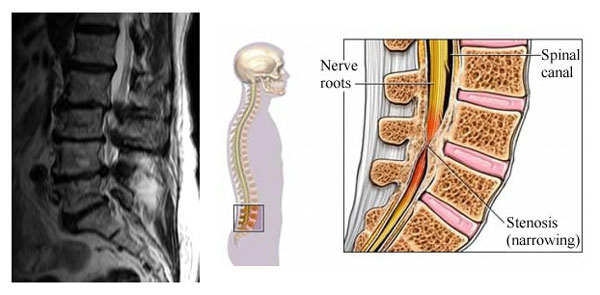
When intervertebral discs collapse and osteoarthritis develops, the body may respond by growing new bone at the facet joints to help support the vertebrae. Over time, this excessive growth of bones - called Spurs - can lead to a narrowing of the spinal canal. Osteoarthritis can also cause thickening of the ligaments that connect the vertebrae, which can limit the spinal canal.
Scoliosis
Scoliosis is the deformation resulting from a lateral curvature of a segment of the spinal column from its axial shaft, making it appear in an "S" or "C" shape when it normally should be straight and have an "I" shape. Thus, Scoliosis represents the lateral and rotational distortion of the spinal column. We are dealing with a 3-dimensional damage.
This abnormal curvature of the spine often occurs in children, more frequently during their adolescent years. It can also develop in elderly patients who have osteoarthritis. This spinal distortion can cause lower back pain.
Other Causes
There are many other causes of lower back pain, some of which may be serious. If you have vascular or arterial disease, a history of cancer, or pain that is always there, regardless of your activity level or position, you should consult with your primary care physician.
Symptoms
Lower back pain varies. It can be sharp or pressing. It can be dull, or feel like a cramp. The type of pain you have will depend on the underlying cause of your lower back pain.
In most people, you will find that support or lying down will improve lower back pain, regardless of the underlying cause. People with lower back pain may experience some of these.
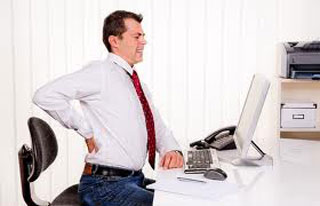
The pain seems to pass from the buttocks, thigh, and leg, down to the sole of the foot. Even a contraction of the spine can hinder the person from bending forward. Sometimes the pain goes down to the knee and the factor causing this is not easily understood.
- Lower back pain may worsen with bending or lifting (weights).
- Sitting may worsen the pain.
- Standing and walking may worsen the pain.
- Lower back pain comes and goes, and often follows a course with ups and downs, with good days and bad days.
- The pain may spread from the lower back to the outer side of the thigh, but not down into the leg.
- Sciatica (or sciatic nerve pain) is common in a herniated disc. It involves the buttocks and leg pain, and even, numbness or a sensation of needle pricks weakness that goes down to the feet (soles). It is possible to have sciatic nerve pain without lower back pain.
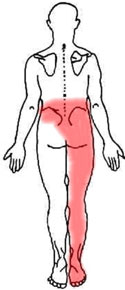
Regardless of age or symptoms, if lower back pain does not improve within a few weeks, or is associated with fever, chills, or sudden weight loss, you should call your doctor.
Tests and Diagnosis
Medical History and Physical Examination After discussing your symptoms and medical history, the doctor will examine your back. This will include inspection – looking at the back and palpation – touching to identify painful areas. The doctor may ask you to bend forward, sideways – to the side to see limitations of movement or pain.
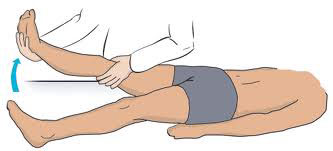
The doctor may measure or assess the function of the nerves in the leg. This includes checking the reflexes at the knee and ankle, as well as testing the strength and sensitivity. This examination may reveal serious nerve damage.
Imaging Tests Other tests that may help the doctor confirm the diagnosis include:
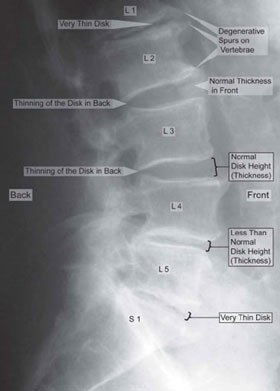
X-rays or Radiography. Although they visualize only bones, X-rays can help determine if you have apparent causes of lower back pain. It will show fractures, aging changes, curves, or deformities. X-rays do not show discs, muscles, or nerves.
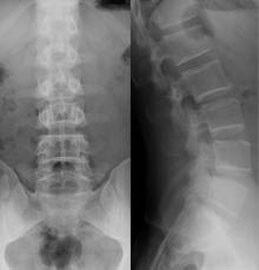
Magnetic Resonance Imaging (MRI). This examination can create better images of soft tissues, such as muscles, nerves, and spinal discs. Conditions such as a herniated disc or an infection are more visible on an MRI scan.
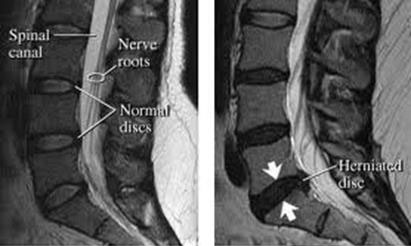
Computed Axial Tomography (CAT). If the doctor suspects a bone problem, he or she may suggest a CAT scan. This examination is like a three-dimensional X-ray and focuses on the bones.
Bone scan. A bone scan may be suggested if the doctor needs more information to evaluate your pain and to ensure that the pain is not from a rare problem like cancer or infection.
Bone Density Scan (DEXA Scan). If osteoporosis is suspected, the doctor may order a bone density test. Osteoporosis weakens the bones and makes them more prone to breaking. Osteoporosis itself should not cause lower back pain, but vertebral fractures from osteoporosis may manifest.
I think that the description by the group of co-authors is readable for the interested parties. Thank you for your information
Sent by Anesti Pina, më 13 September 2013 në 10:36
Hello, I am Petriti. I had a problem with my back 5 years ago, which was a result of the work I did laying tiles, during which I spent almost 40 days barely able to get in and out of a car. However, it passed after I accidentally pulled an electrical cable with a lot of force, and the pain immediately subsided, and I haven't felt it since for 5 years. But today, I lifted a weight of almost 10 kg and my back started hurting again, making it hard for me to move. Please tell me some way to relieve this pain, Petriti
Sent by Petrit Zefi, më 30 October 2013 në 03:30
Petrit, I have had the same problem with the tiles after doing a lot of physiotherapy, the pain wouldn't go away, and it even gripped my leg. In 2010, I had surgery in Athens, and now I am much better, I don't have leg pain. Sometimes, when I work for extended hours, it hurts again, but after a short rest, the pain goes away. If you have leg pain or numbness in your fingers, I advise you to visit a neurosurgeon as soon as possible before the nerve weakens. You might need surgery for the operation to be 96% successful; the nerve shouldn't lose the strength of the leg, it's a matter of time
Sent by shkelzen, më 09 January 2014 në 16:09
I am Gjergji and I have been suffering from back pain for 4 months, I have numbness in my left buttock and I always feel it on the same side. Please give me some advice on how to get it to pass, thank you
Sent by gjergji, më 10 December 2014 në 07:56